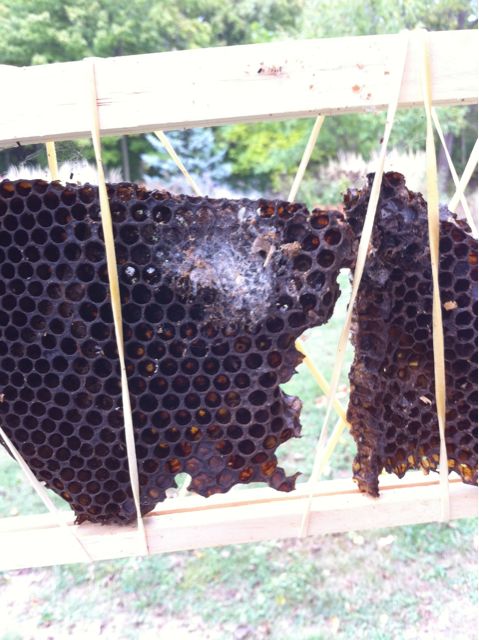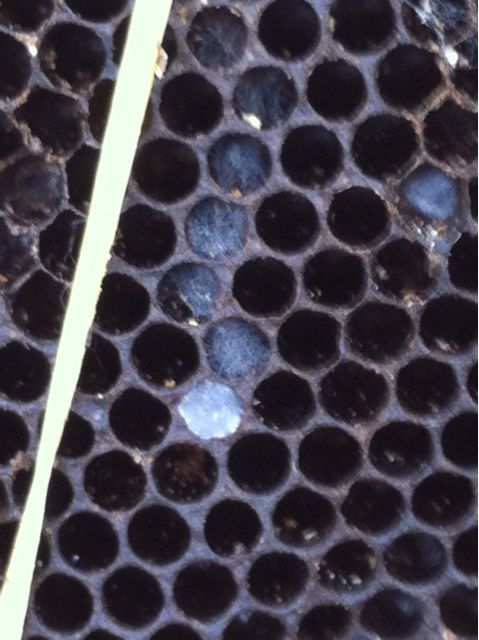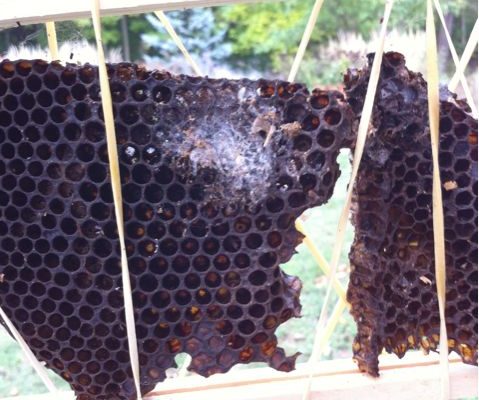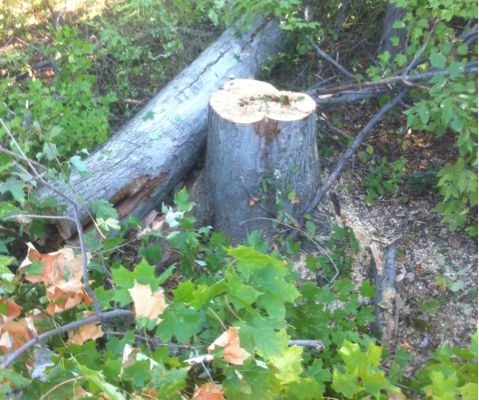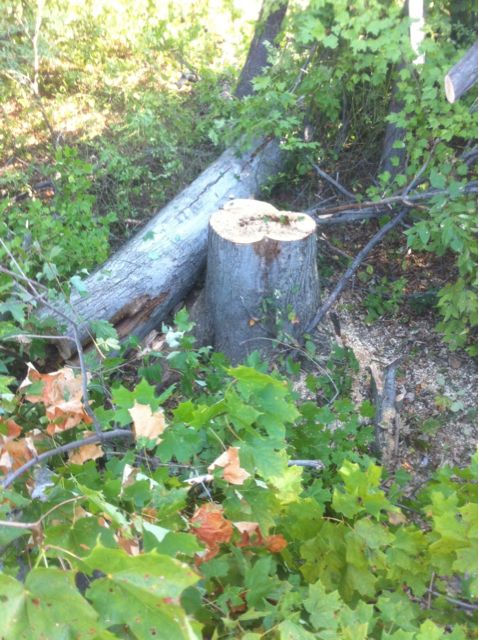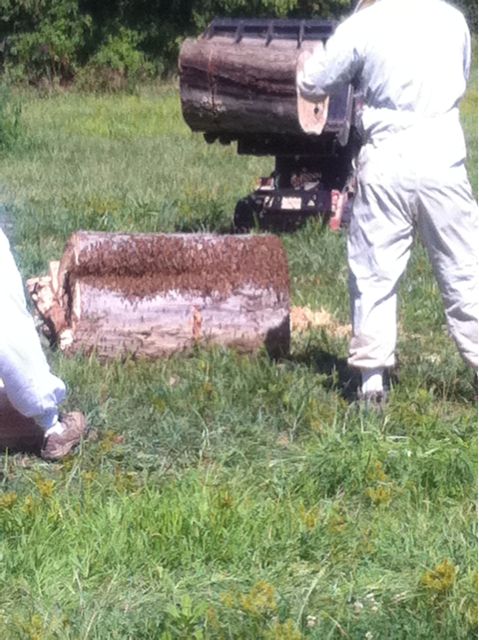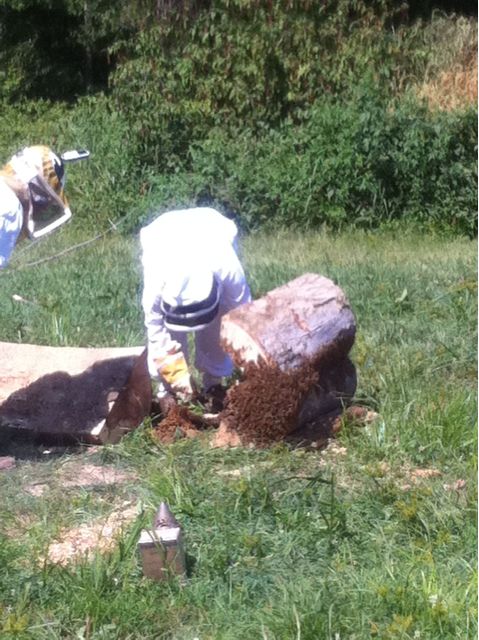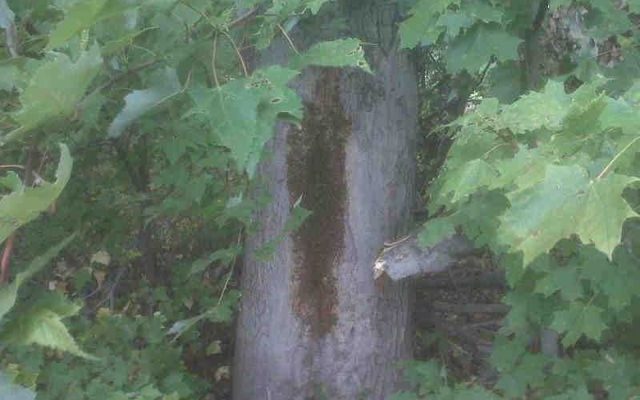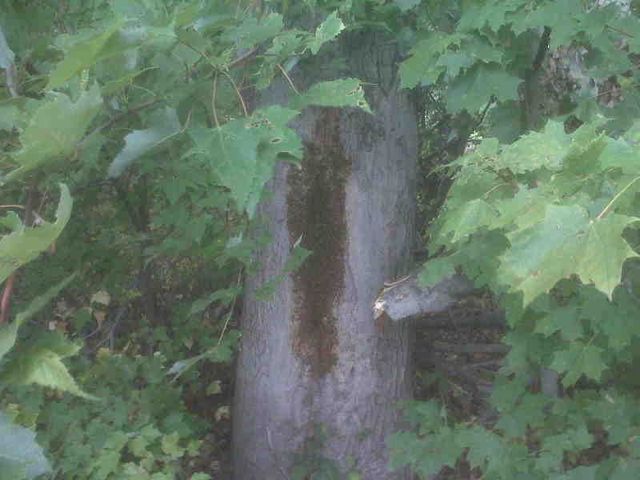I have good news, and I have bad news, Reader. Let’s go with the bad news first and get it over with. It’s not the worst news in the world, and we all sort of knew it was coming anyway. And better that it came early rather than late. Everyone said it would happen, and they are 100% correct.
First and worst bad news: The August Boatwright hive—the bees we collected from the tree—is a goner. I’m gonna recycle the comb, and I’m gonna recycle the wonderful colony name, but as of yesterday, the bee-tree colony is a thing of the past. But it was a wonderful experience, wasn’t it?
I inspected all the hives yesterday, and when I got to the August Boatwright colony, I discovered no eggs, no brood, no queen, no stores, no pollen, and only a very very few bees. And the comb I collected from the tree was quickly filling with wax moths…it’s like peering into a home that’s been vacated…you know how the thing goes to pot right off the bat without people to care for it…how grass grows where it isn’t welcomed, etc. I’ll go into the reasons for this some other time…for now, all you really need to know is that I dismantled their hive, and I scooted another colony over near the spot previously occupied by the tree bees so the returning bee-tree foragers (if there were any) had a place to call home when they returned.
The second other bad news (which isn’t too bad…see how things are already looking up?): The little swarm I spent an afternoon capturing from our tree last Tuesday absconded. That means that every single one of them flew the coop. They’ve sought greener pastures. I hadn’t yet grown to love these bees. I hadn’t set them on their permanent site. I hadn’t named them. I hadn’t even peeked into their box to see how they were doing. But with no drawn comb and no food and nothing to make the place feel lovely, they left. I would have made it wonderful for them, Reader, but I don’t have any more comb to give them. All my other hives need everything I’ve got, and that late-season swarm had little chance of survival to begin with.
So, that’s all my bad news. Two late-seasoned bee experiences are a bust. I do feel awful about the tree bees. The triple traumas were just tooo much for them: their removal from the tree and their relocation; their getting dumped on the ground when I accidentally turned their box upside down (still cringing when I think of it); and their being robbed of all their nectar and sugar water by other bees who sensed their weakened state.
Tomorrow…I report better news (not earth shattering, just better).
